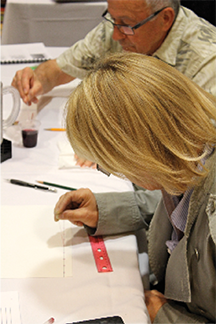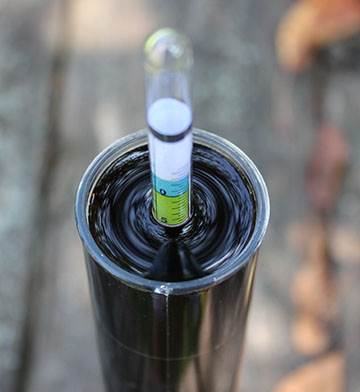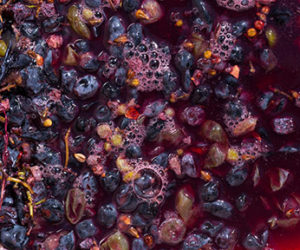
The term “malolactic fermentation” may make you scratch your head in confusion and cause your palms to sweat with nervousness. But rest assured, there is a method to this malolactic madness and it is a crucial process for winemakers to become familiar with.
Malolactic fermentation (MLF) is the conversion of a wine’s malic acid to lactic acid conducted by inoculating your wine with Oenococcus bacteria. The process reduces acidity levels while increasing pH levels, leaving a wine with a more complex and ambrosial flavor. Prior to conducting MLF, a wine may have a tart flavor, comparable to that of a green apple. Post-MLF, the mouthfeel of the wine is typically much smoother and buttery, a result of the production of diacetyl during the fermentation.
Typically, malolactic fermentation benefits red wines more so than white wines given the higher levels of malic acid and is an important process of reducing acidity by microbiological rather than chemical means. It also helps to know that if MLF isn’t done in a controlled environment, there is a chance it occurs spontaneously after a wine has already been bottled, so it’s best to conduct it prior to bottling if you want to avoid fizzy wine and the potential development of off-flavors.
When beginning MLF, you have a couple different forms of bacteria cultures to choose from. There are freeze-dried cultures and liquid cultures. Many people choose a liquid culture because it is easy to use and inexpensive (a package costs about $7.50), whereas the freeze-dried cultures often need to be rehydrated before use, and cost a bit more ($20 and up). When starting your MLF note the culture’s alcohol tolerance. Some cultures may not be appropriate for your wine’s alcohol level, inhibiting the fermentation process.
After choosing the proper culture, you’re ready to start the malolactic fermentation at the end of alcoholic fermentation (MLF can be carried out concurrently with the fermentation — but doing the MLF after is usually safest). First, ensure that your environment’s conditions are suitable for the process and the bacteria you’re using. There are four elements to be attentive of: SO2, pH, temperature, and nutrients. Ideally, your wine’s free and total SO2 should be less than the maximum amount prescribed by your chosen culture manufacturer. Also, malolactic bacteria are particular about pH; you’ll want to make sure the pH of your wine is higher than the labeled minimum. Your wine’s temperature should be between 64–77 °F (18–25 °C) in order to activate your bacteria. Finally, don’t let your bacteria get hungry! The bacteria require nutrients present in lees, so avoid racking your wine before MLF, or add nutrients specifically for malolactic bacteria.
Once you’ve established and stabilized these conditions, inoculate your wine with the bacteria. If conducting the fermentation in a more challenging environment, add apple juice to your hydrated culture to stimulate it. Cover the container, inhibiting air exposure, and let sit for two to four days, then add the mixture to your wine and stir gently.
MLF will take one to three months based on temperature and wine chemistry. During this time, monitor your MLF carefully. To analyze progress, paper chromatography is a great method to inspect the presence of malic or lactic acids. You’ll know the MLF is complete when you see an evident lactic spot, a malic spot that has almost disappeared, and a tartaric spot on your paper. Once MLF is 100% complete, immediately add the usual required amount of sulfite to stabilize the wine.
And that’s malolactic fermentation! Wasn’t so bad after all, was it?






